Graphic Content
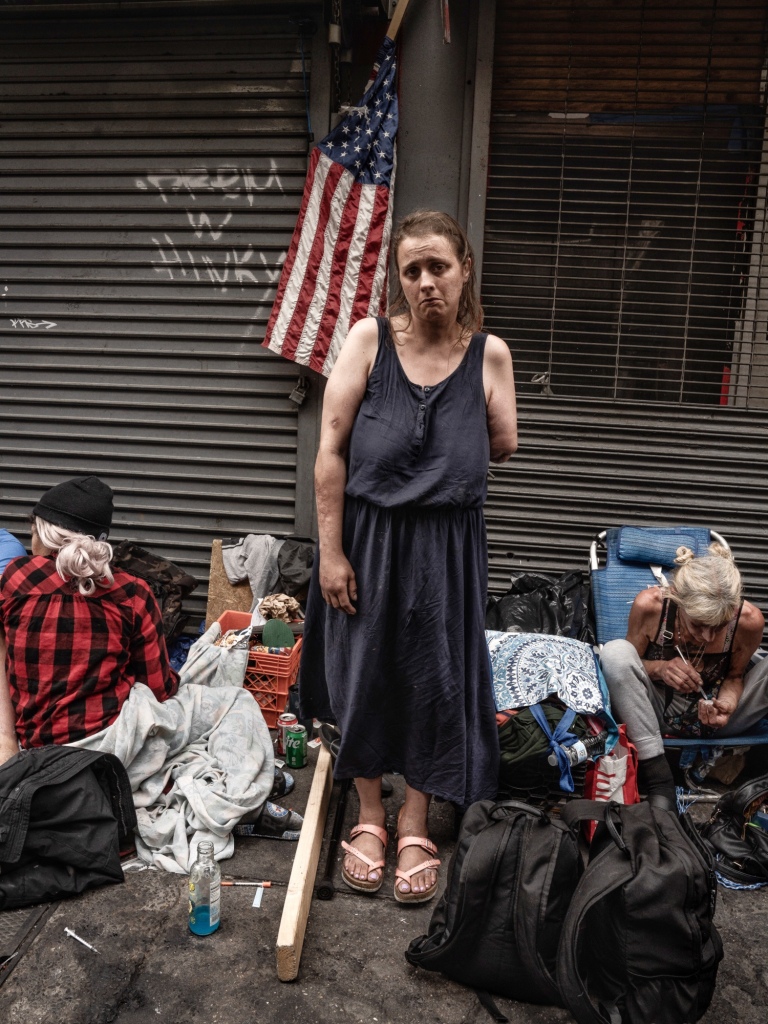
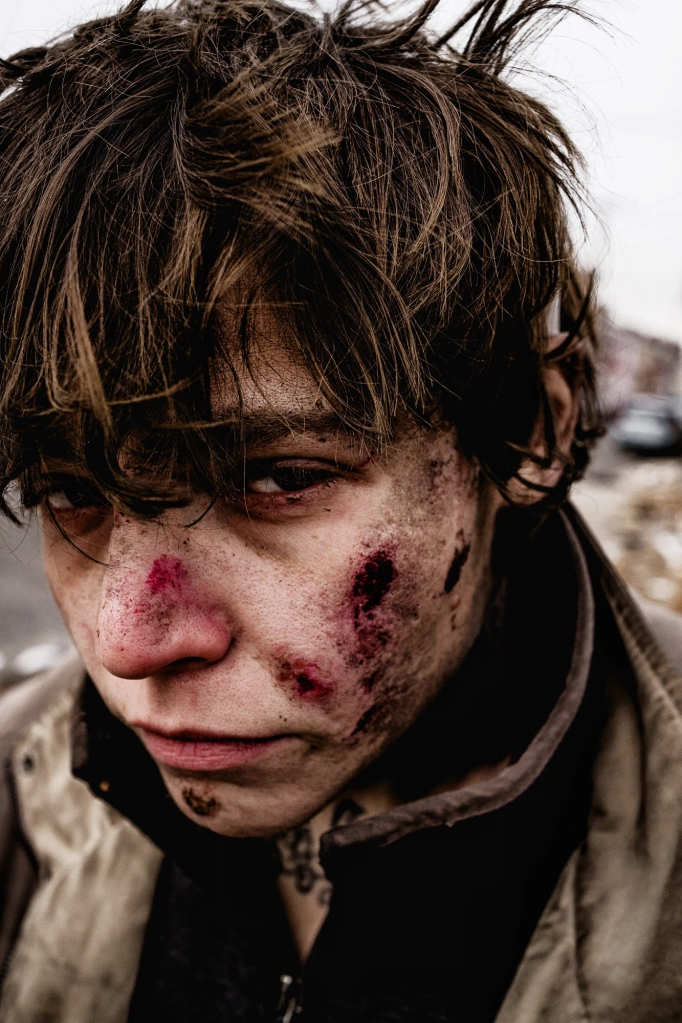
I returned to Philadelphia on September 20, 2022. I had been in New York City since 2017, and before that, Southern California, Austin, Texas and very briefly in Charleston, South Carolina. Living in different places during various phases of my life as a single parent, trying to find a place to call home where I actually felt at peace with my son. I had fled Philadelphia originally because of bad memories growing up, and rough, Philly-style experiences on the street that made me think twice about raising a small child in the City of Brotherly Love. During the time I was in New York City, I spent a month in the Summer of 2018 in Philadelphia. One day I visited an area located on the fringes of Kensington. I had read of the neighborhood, and I knew that I needed to see it for myself. I photographed a few people on the outskirts, near York Street and Aramingo Avenue. But I didn’t have the courage to head in to the heart of the chaos….so I did not. I didn’t go, and I regretted not having done so. I spent four years thinking about Philadelphia. My life in New York finally came to an end after I had Covid. I decided that whatever time I had left was going to be spent elsewhere, and the very first place I needed to be in was Kensington.

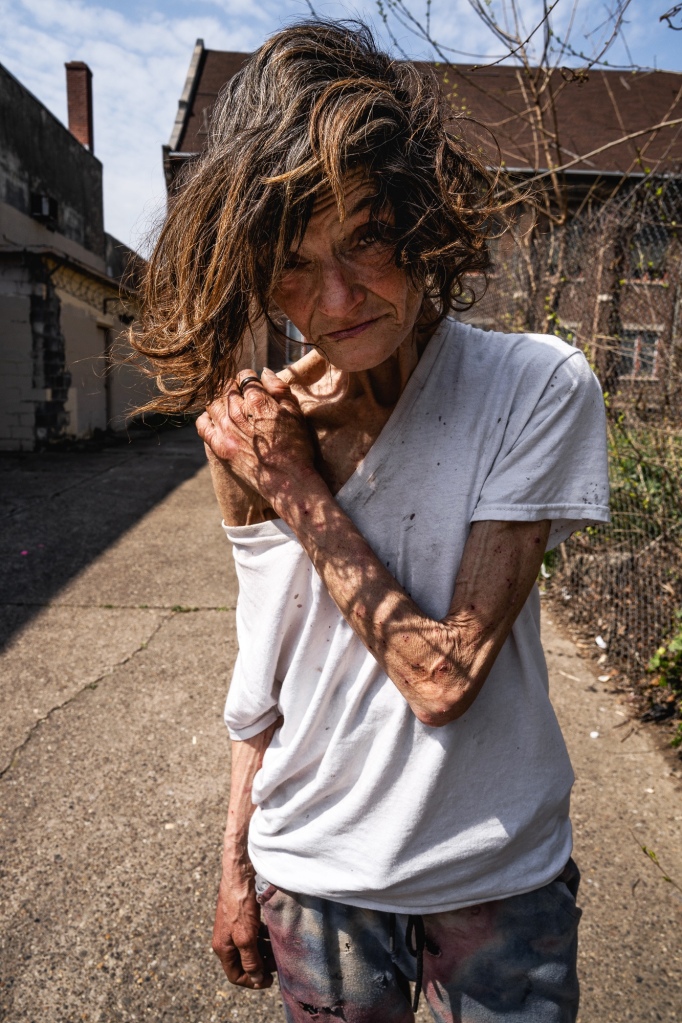
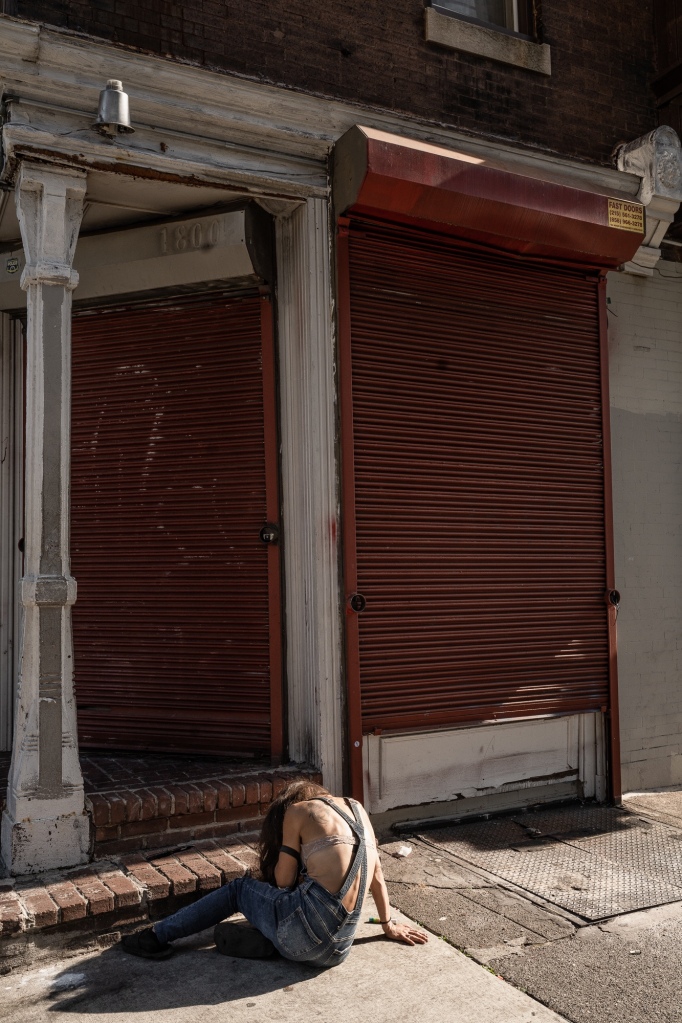
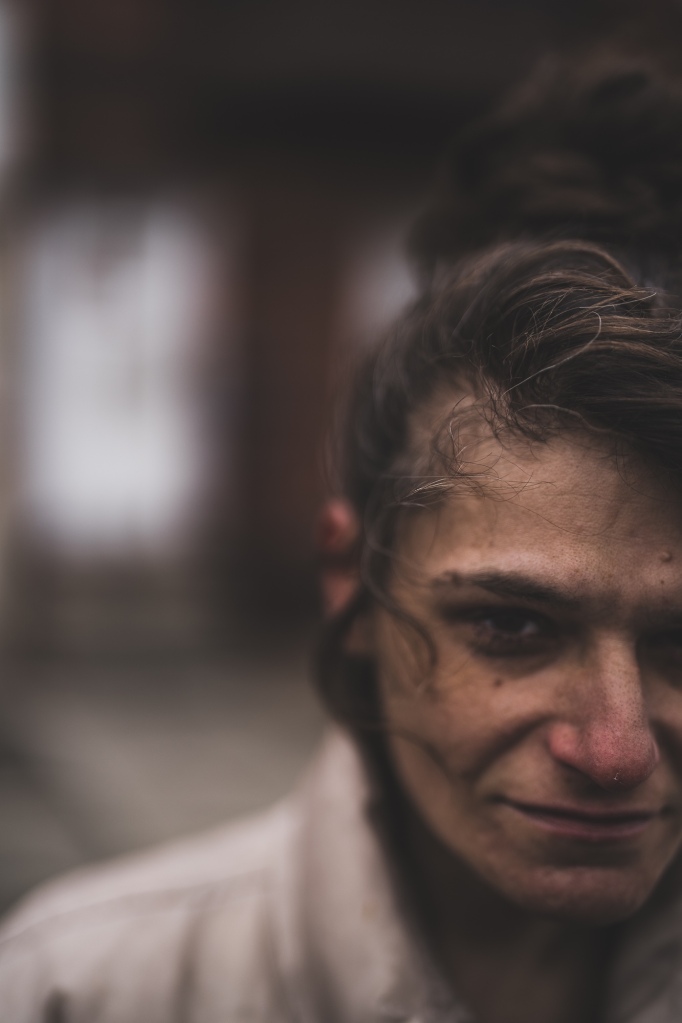
As soon as I arrived in Kensington I began to learn about the ravages of Xylazine, or Tranq, as it’s nicknamed, combined with fentanyl. Read: https://time.com/6164652/xylazine-overdose-crisis/
The necrotic lesions can show up anywhere on the body, far from the injection site. Xylazine causes vasoconstriction, which interrupts blood supply to the skin. The lesions are not always infected, but when infection does occur it can be catastrophic, sometimes resistant bacteria strains that colonize deep tissue and even bone, resulting in amputation and disfigurement.
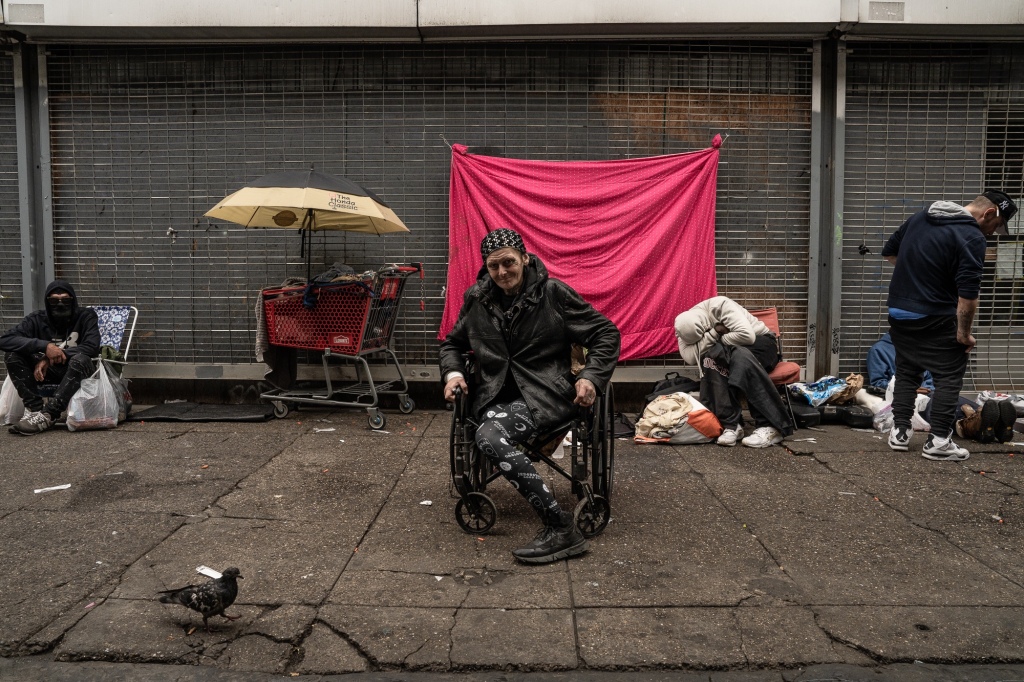
Brooke is a beautiful person to photograph. I was in a state of shock on the day I made these images with her. She explained how she manages her massive forearm injury created by Xylazine/Tranq. She has already lost a leg to Tranq, and is very careful about her wound management. Unfortunately, the addiction and all of the related issues that she grapples with daily create an impossible situation for her. The injectable drug that causes the wound she has is in the supply of fentanyl that she depends on…and so the wound never heals. Sometimes there is healing, often requiring a hospital stay, surgery, intravenous antibiotics….not always an option for most people, who are often resistant to going to the hospital. Some hospitals are not compassionate, or well versed in medical addiction management techniques to make patients comfortably able to tolerate a hospital stay without a supply of fentanyl obtained from the street. So many don’t go to the hospital, and the situation deteriorates madly. There are many amputations that result from these massive lesions, young people without legs, hands, feet and arms. People sometimes inject directly into the wound, as Brooke is doing on Kensington Avenue.
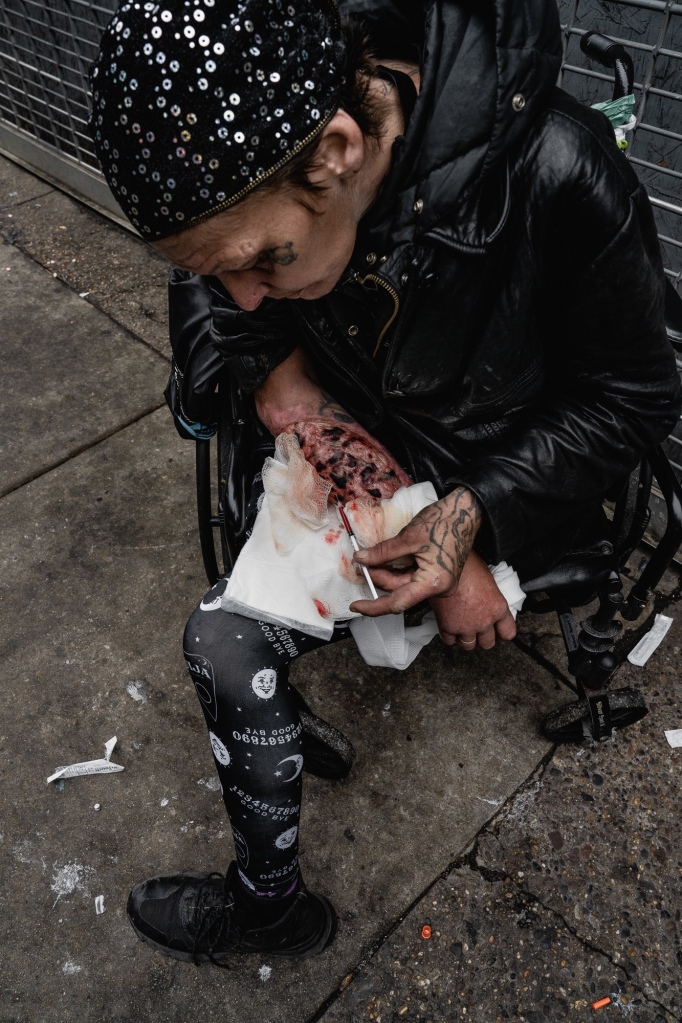
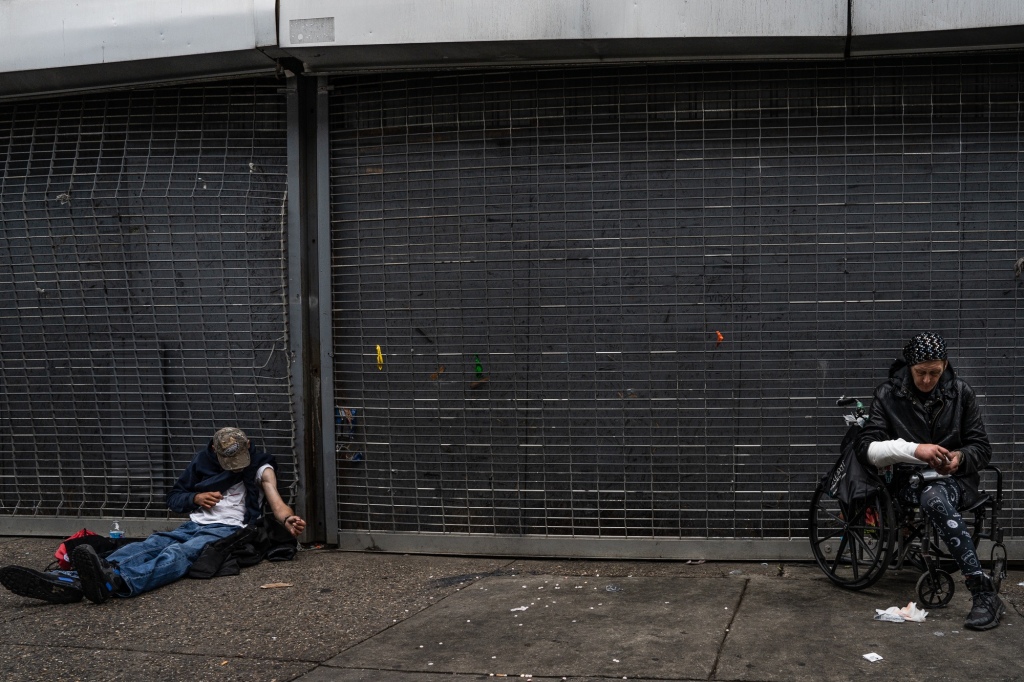
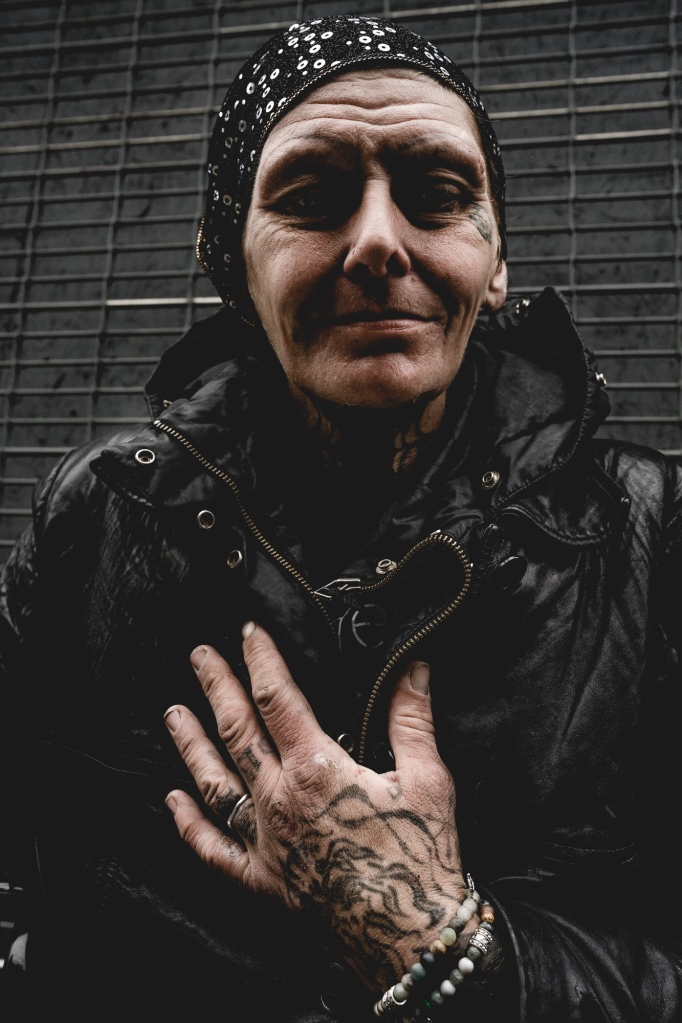
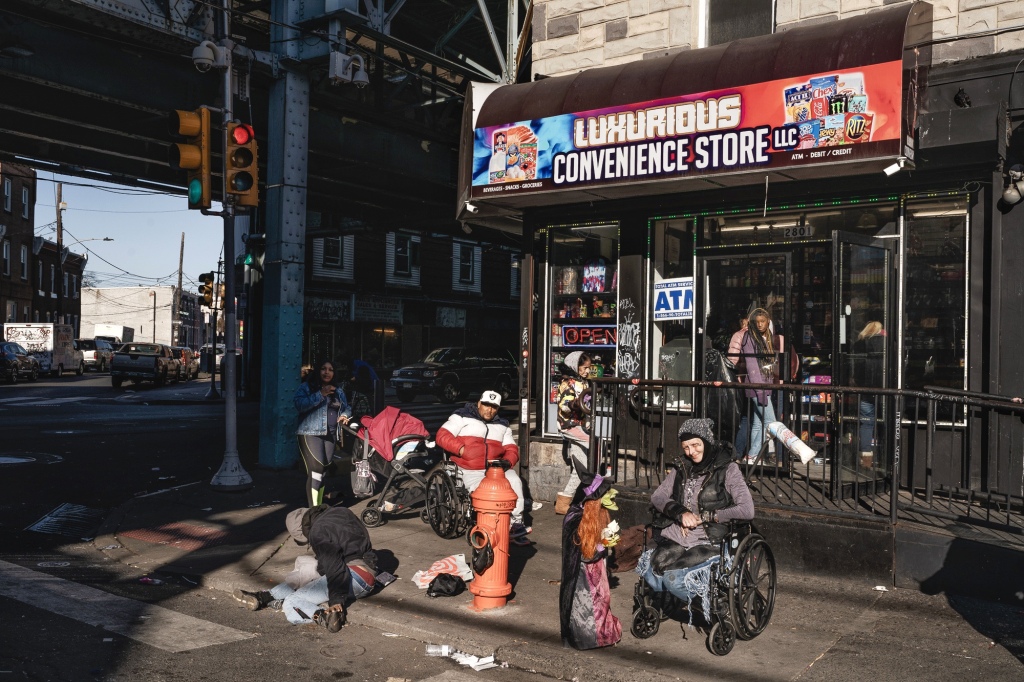
Not everyone is able to properly care for their injured skin, and find themselves in horrible, nearly impossible situations with clothing that binds to the wound, requiring one of the incredibly devoted outreach wound specialists that set up in the area periodically to painstakingly correct these situations as best they can. I was with one such group of devoted nurses and social workers who patiently explained to me the history of the problem, and the practicalities involved with on the street wound management techniques.
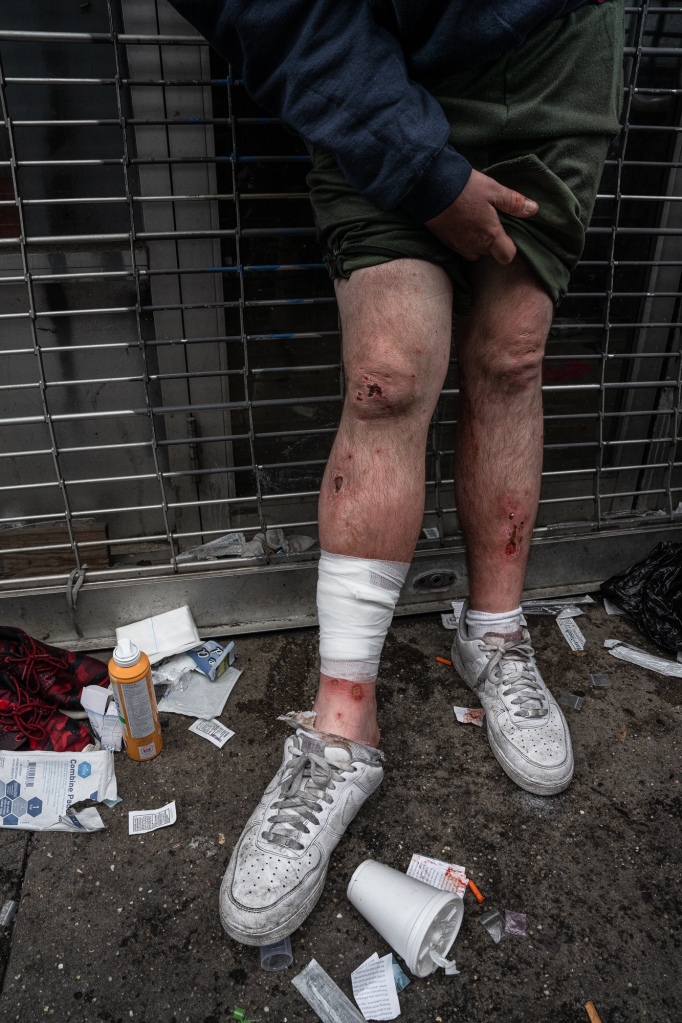
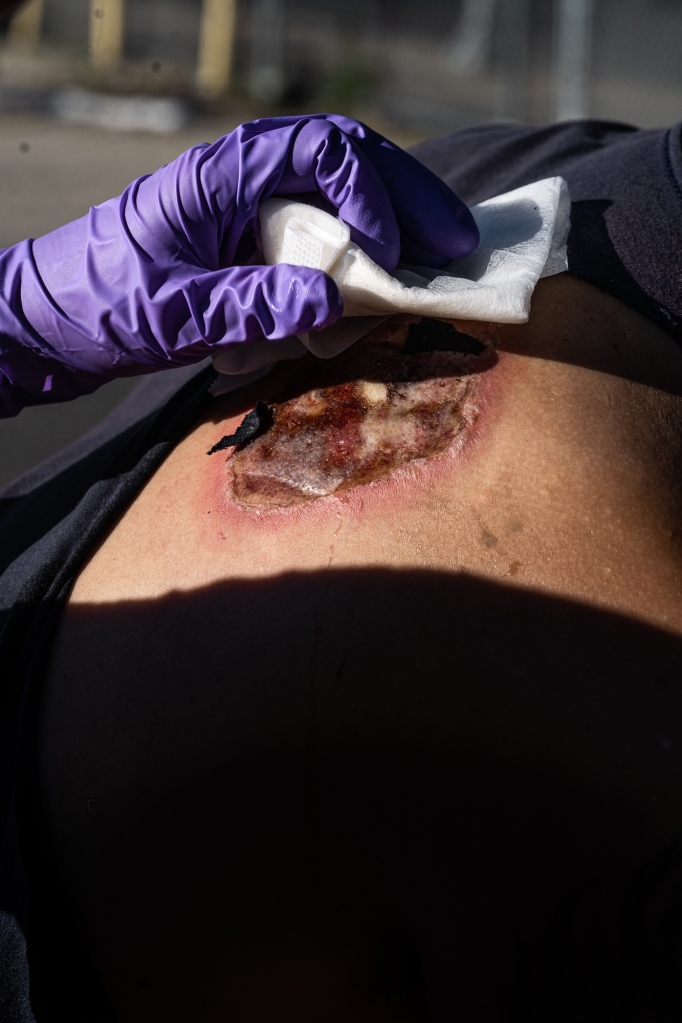
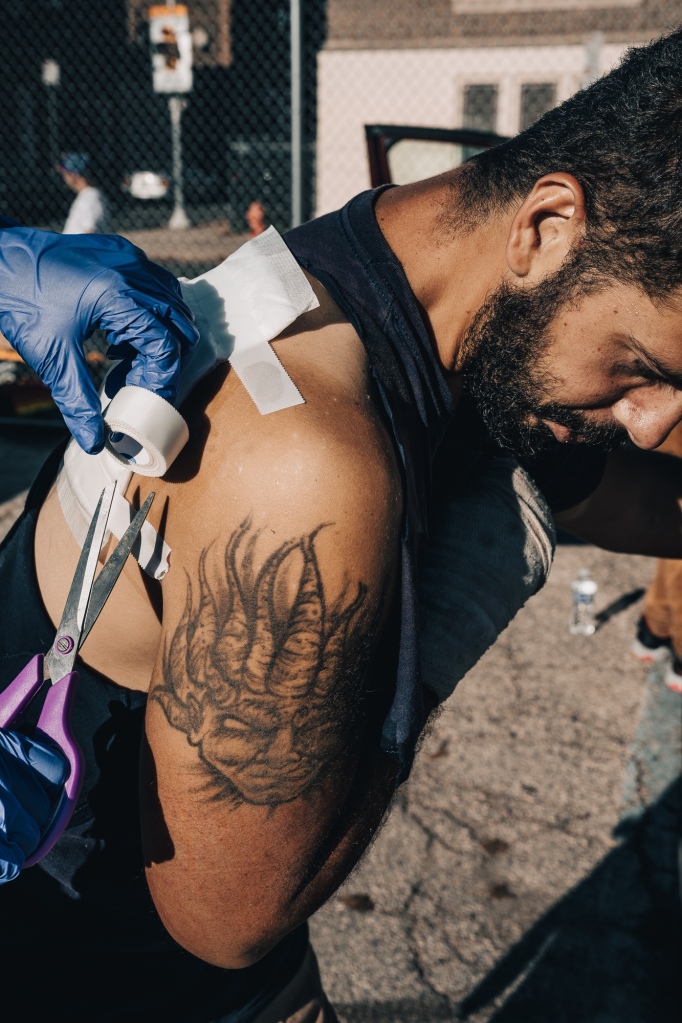

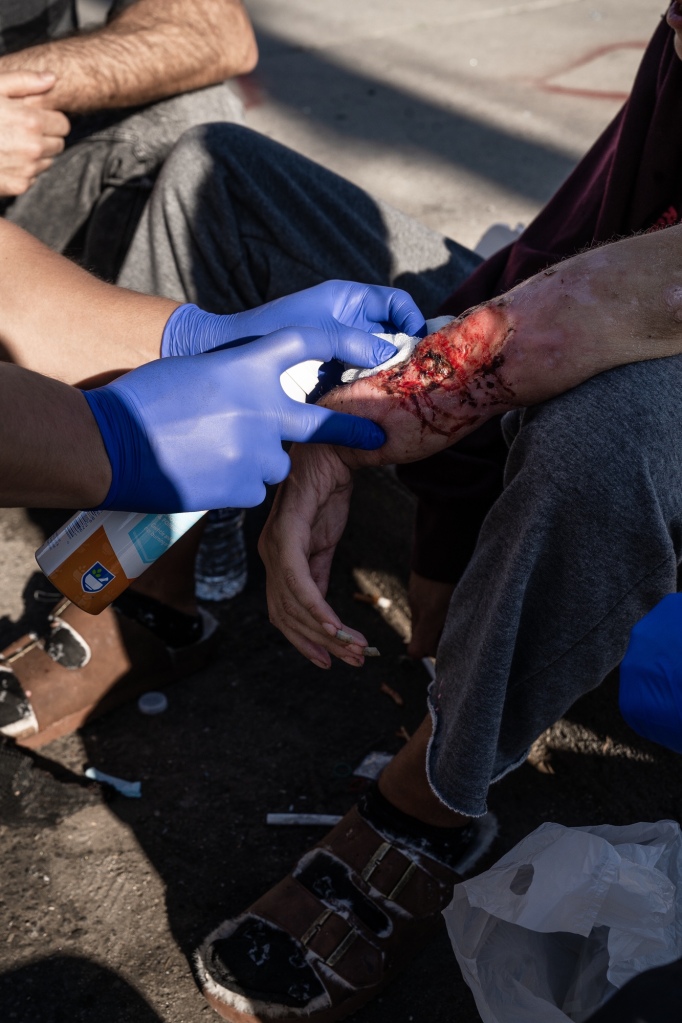
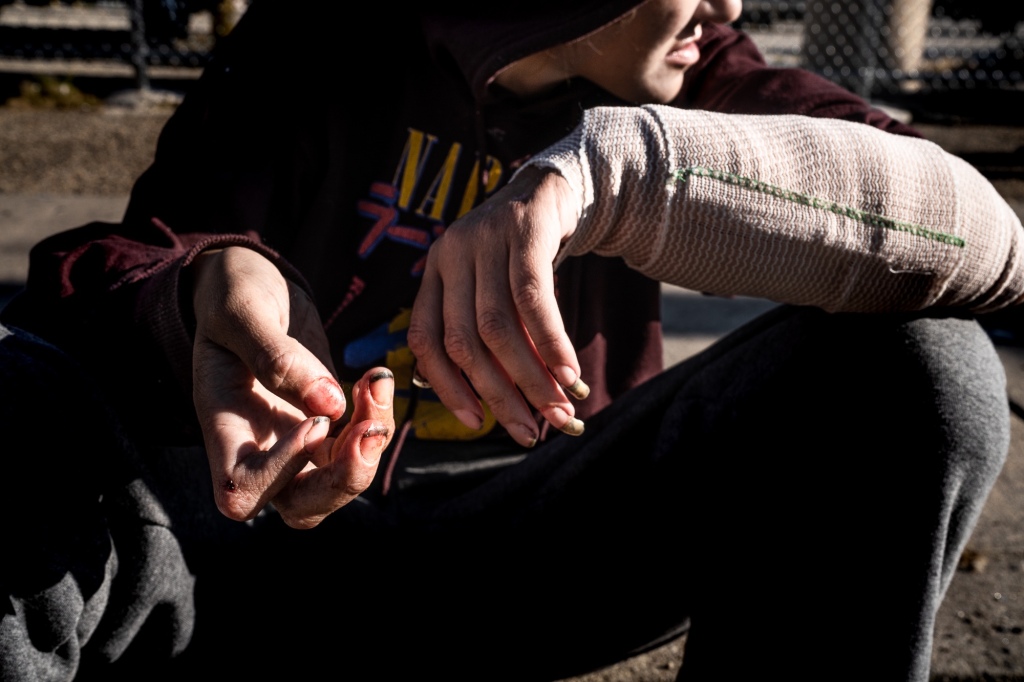
It was one of the first days I spent on Kensington Avenue, openly photographing, and it was only the second time I had ever seen the inexplicable wounds generated by the use of Xylazine. Because the people who are suffering with the catastrophic, disabling lesions are often high on opioids, they do not feel as much of the agonizing pain and discomfort as they would if they were not using fentanyl and Xylazine. But when the effects of the opioids wear off, the pain becomes much more intense and even removing basic clothing is nearly impossible, especially if the wounds are not dressed. Many people do not go to get their lesions cared for for logistical reasons or because they just cannot get there. The longer a wound goes uncovered—sometimes adhering to clothing— the easier it is to put care into the distant future.
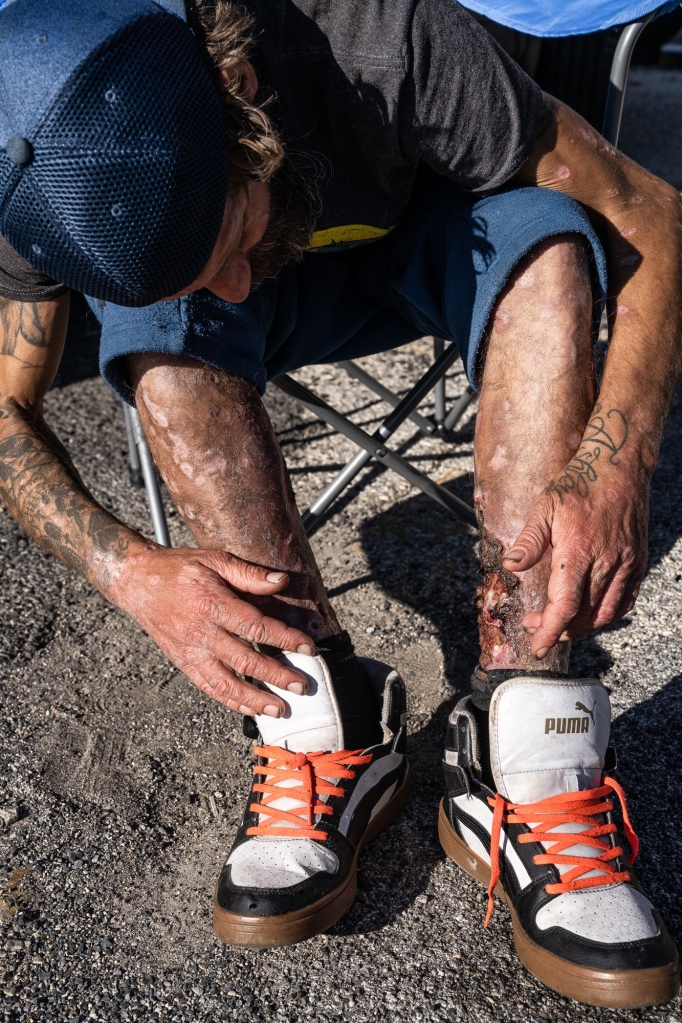
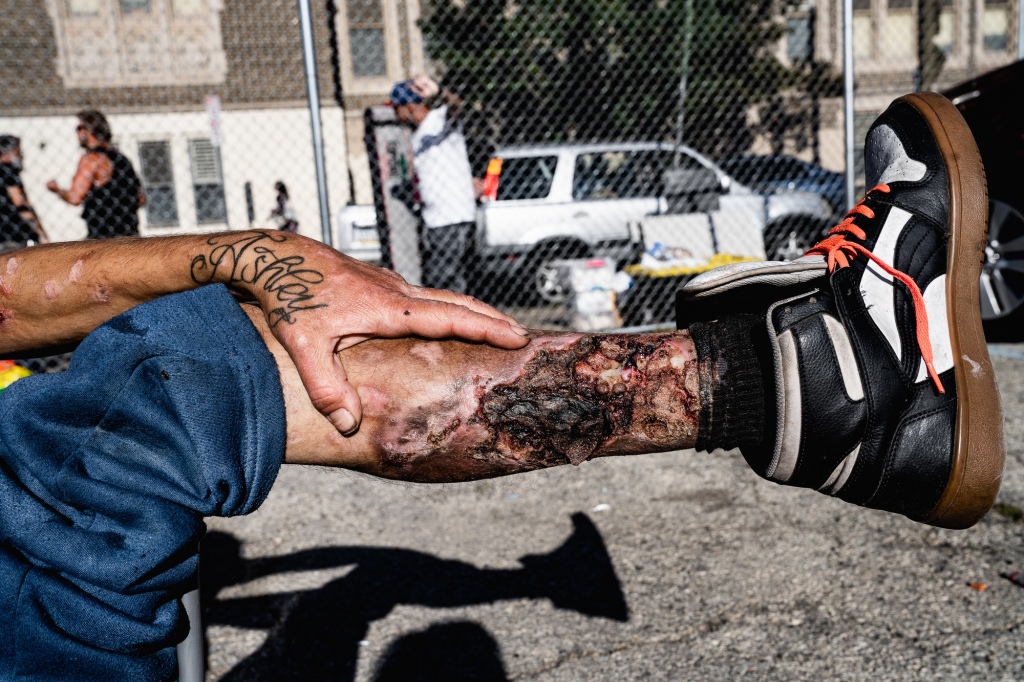
Some of these images are from warmer days last fall. Colder months mean more clothing, more restrictive fabric and less air able to circulate, more fabric that complicates the potential to heal.
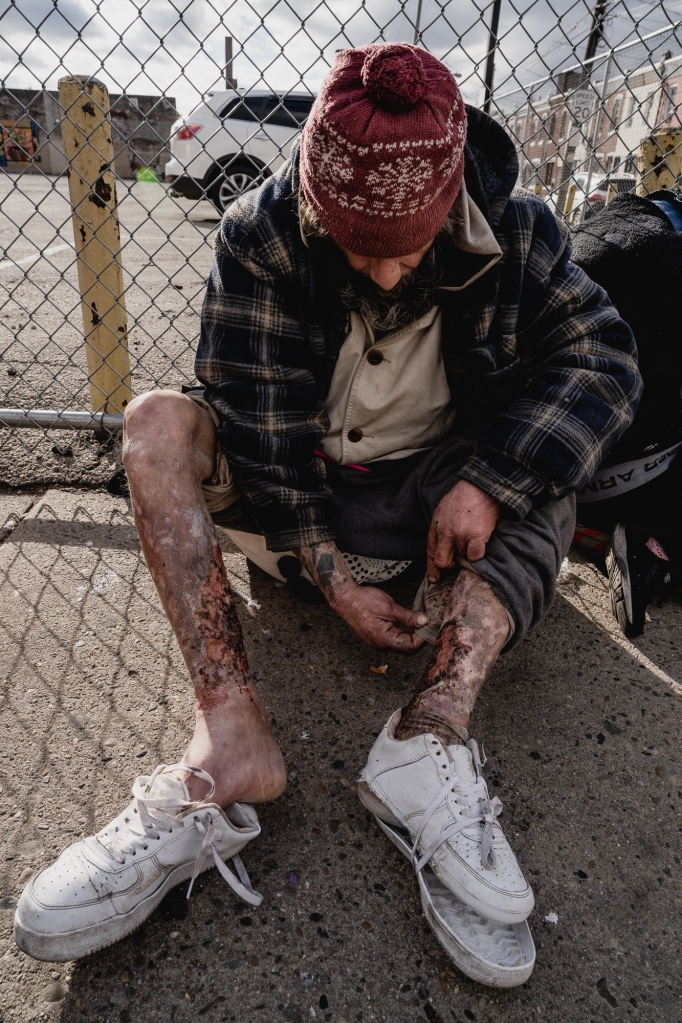
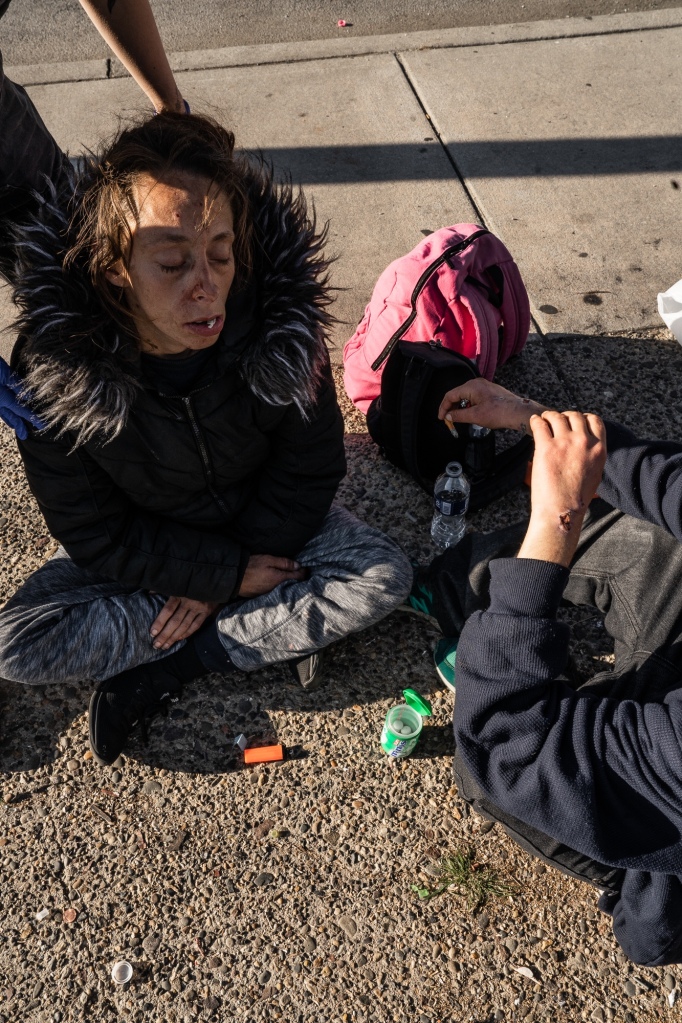
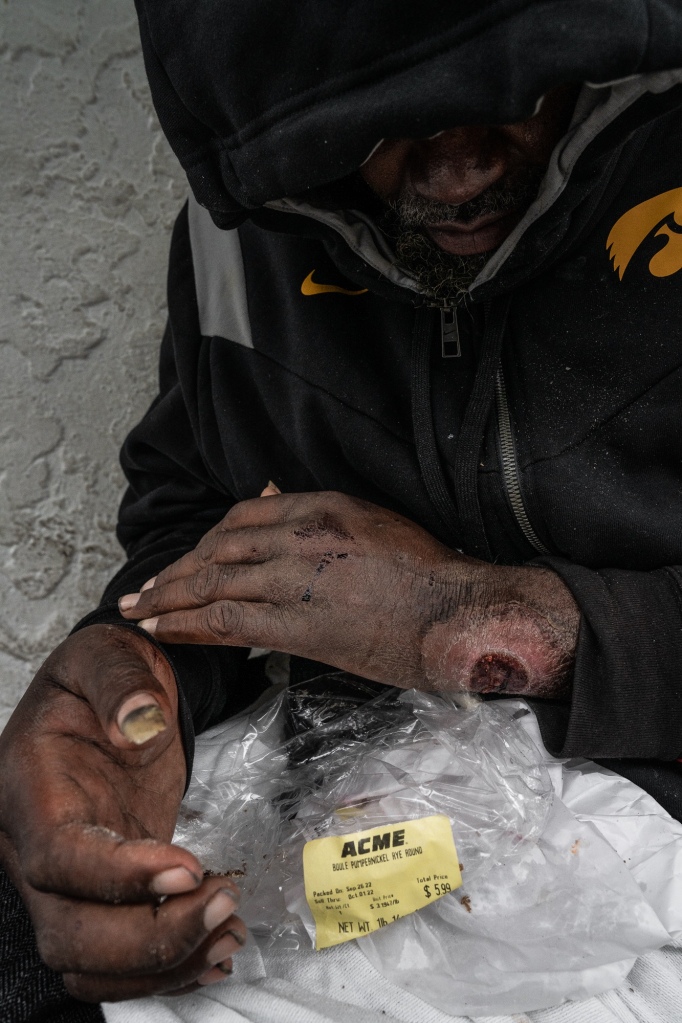
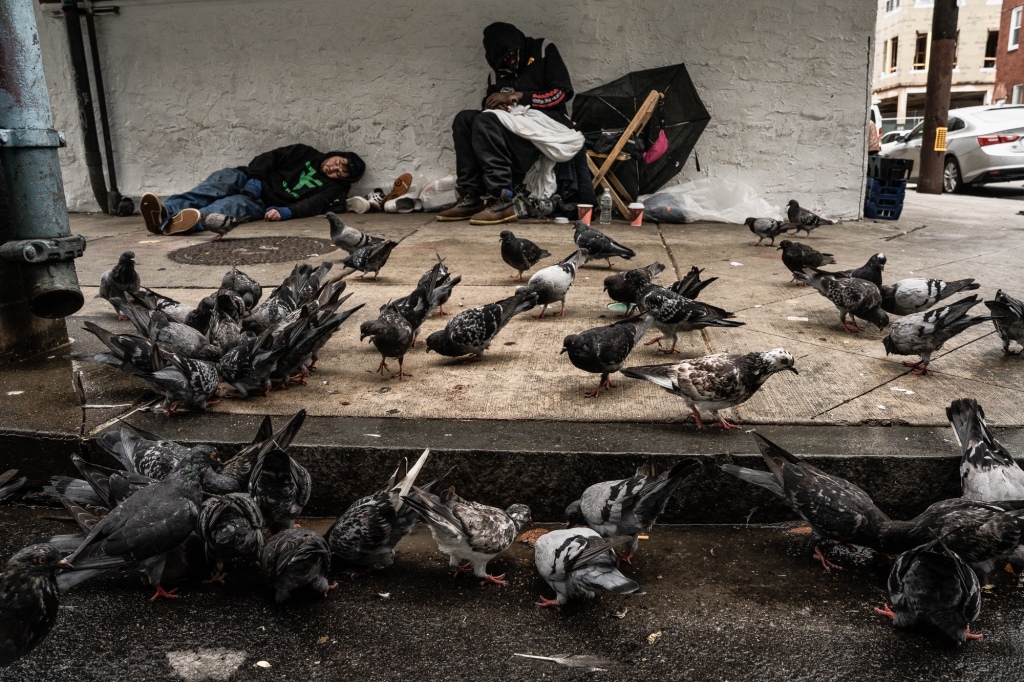
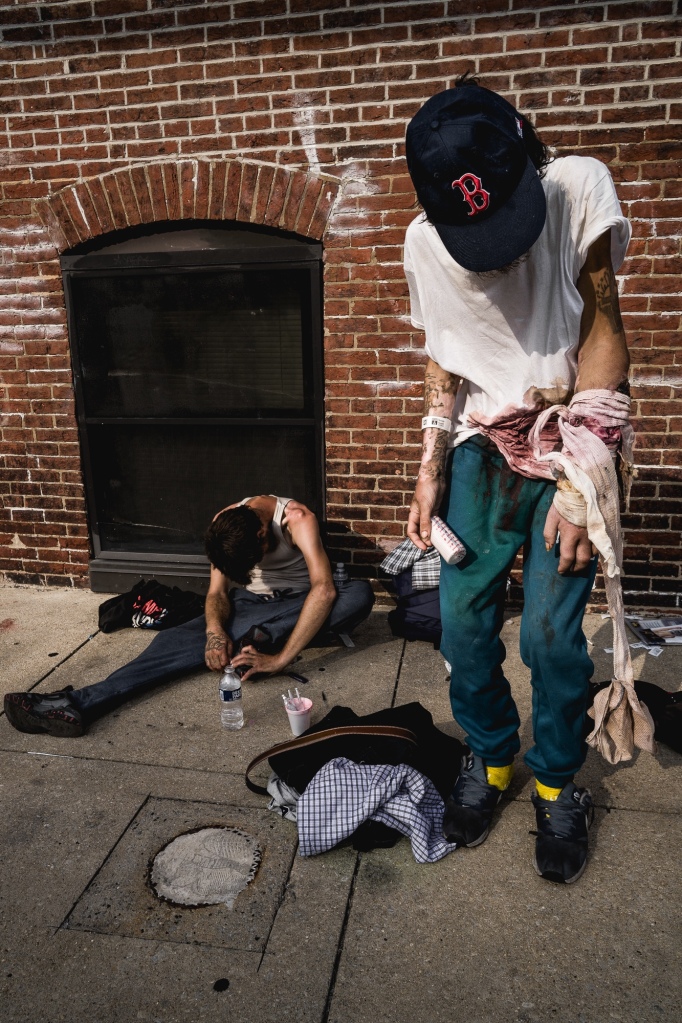
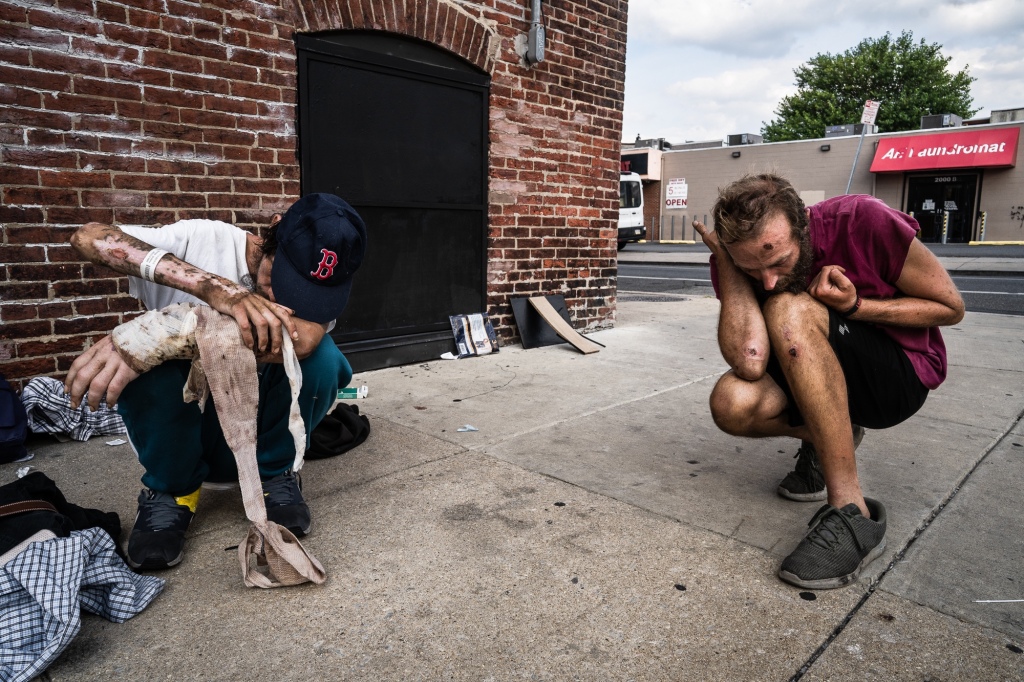
A safe drug supply would effectively eliminate the contamination by Xylazine. Not one user on the street I’ve spoken to wants Tranq mixed in, although that doesn’t mean that nobody objects….I just haven’t found anyone. They dislike Tranq immensely but have absolutely no control over the situation. Since there’s no availability of test kits to determine the amount of Tranq adulterating purchases of fentanyl, it’s impossible to gauge its effect. Ratios change hourly, and dealers often give out free samples to eager users willing to test the supply as it becomes available on the street. I’ve witnessed large groups of people almost running en masse to pop up sample spots buried on side streets. Overdoses involving Tranq and fentanyl have opposing effects. Fentanyl requires Narcan. Narcan is readily available but has absolutely no effect on an overdose caused by Tranq. Tranq excess requires breathing support and resuscitation and, because the drugs are mixed, Narcan and rescue breathing are often necessary.
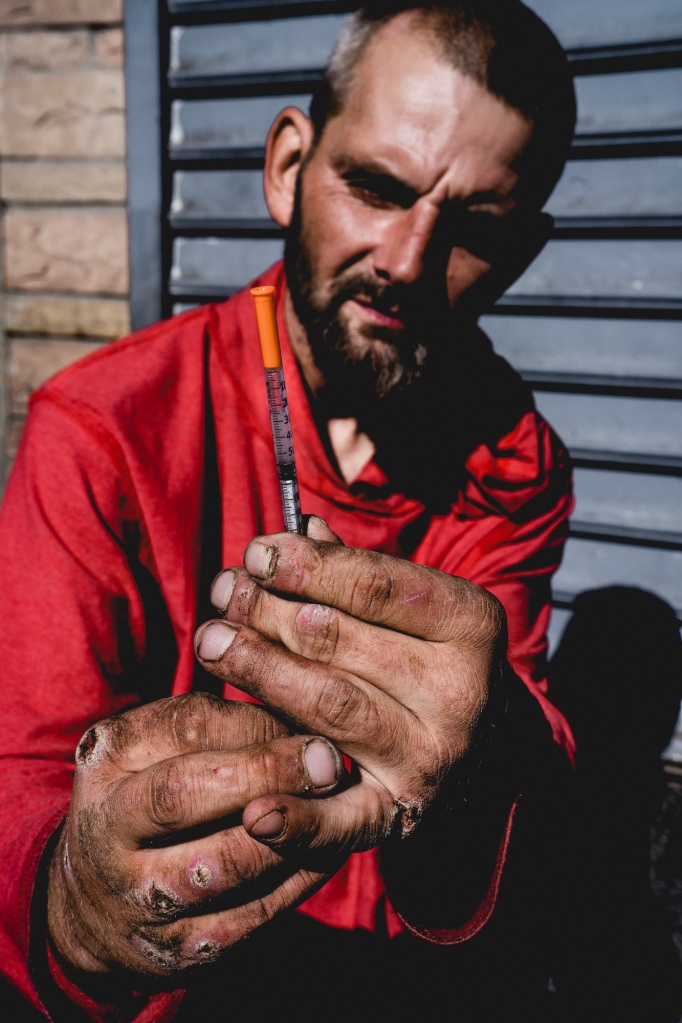
Overdose happens every day, in inaccessible areas. The ratio of drugs in the supply of dope is not predictable. One person described the situation as one in which he felt as though the population of users was being experimented on by those in control of the drug supply. Trying to find that magic combination of substances that will create a desirable high that’s reliable, fast and cheap enough to be profitable. Not everyone buying is unhoused….teenagers are dying in their bedrooms, suburban dads can be seen in parked cars, blacked out in the parking lot of the Walgreens drug store on Kensington and Allegheny Avenues. It happens everywhere, just much more visibly on the streets of Kensington.
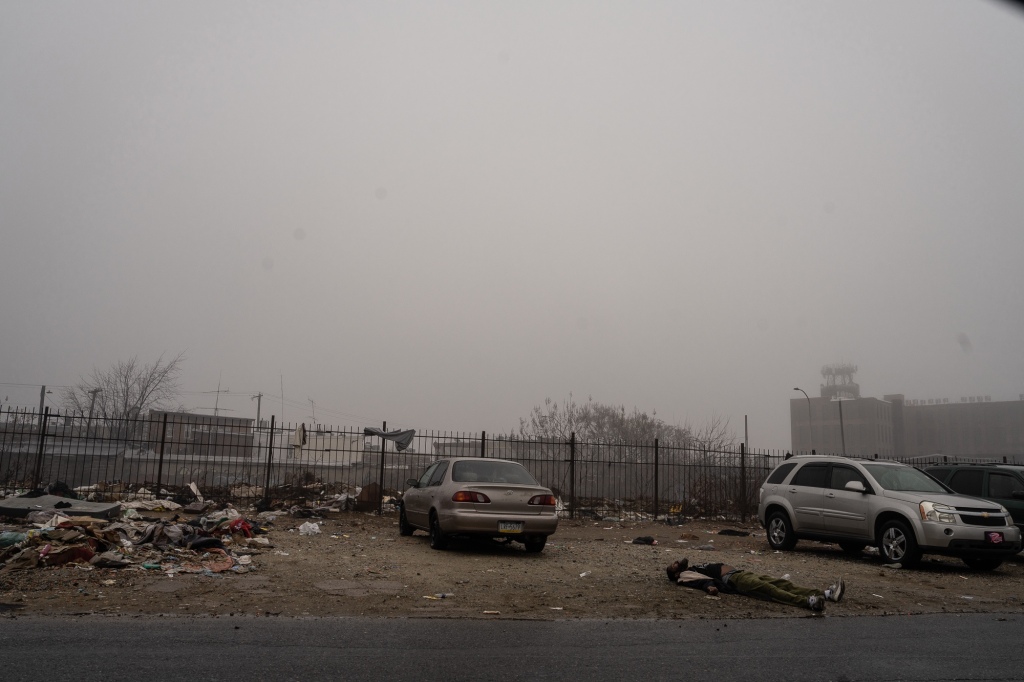
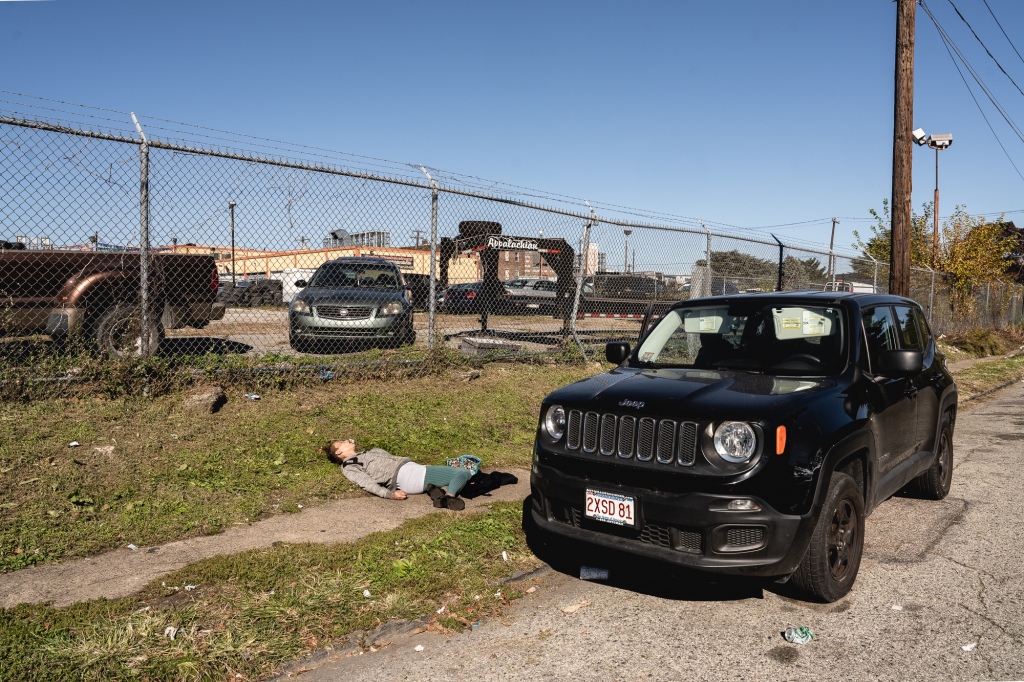

There are a lot of issues surrounding these images. Privacy, documentary image making practices, various people and their sometimes dogmatic views aren’t always a terrific combination. Documentary work in other countries, Ukraine for example, is well tolerated generally. But images made in America of this catastrophe do not always bring people together harmoniously. It is critically important to take pictures that convey absolutely what is happening. It means that faces, places, and circumstance are on display. Corporate media outlets need to consistently address the issue as graphically as is necessary to effectively illustrate the problem, as done here: https://time.com/james-nachtwey-opioid-addiction-america/
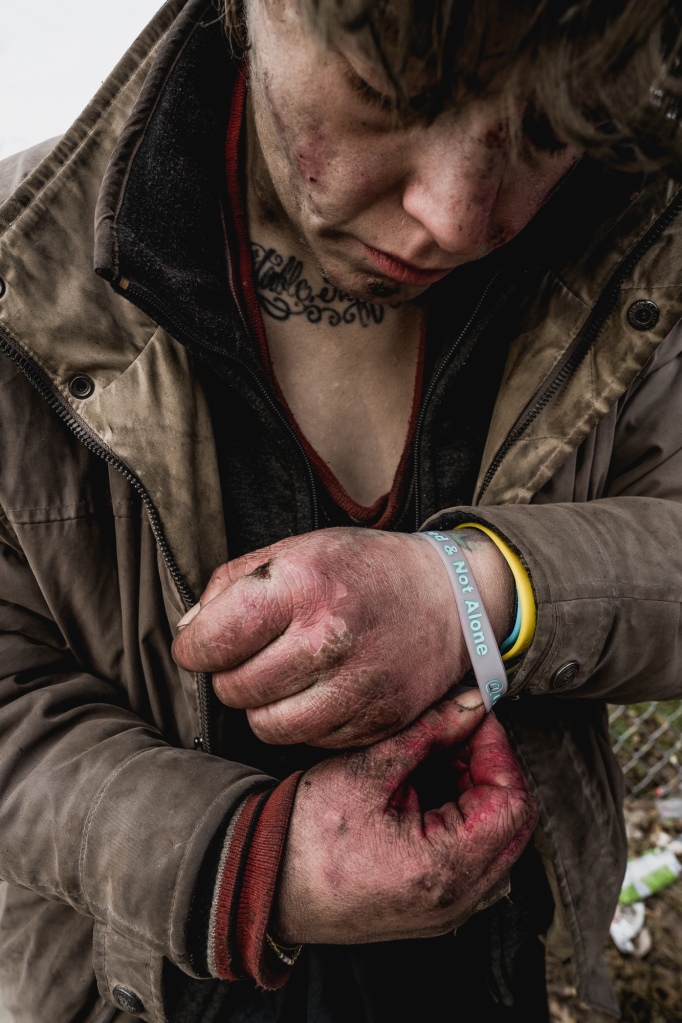
The graphic and intolerably despairing images in this post should be considered in the context of a problem that is killing, maiming or otherwise causing grave dysfunction to hundreds of people each day in the United States, adding up to many, many thousands each year. Images like these are necessary and should not be omitted or eliminated by social media and news outlets. Mainstream media and social media platforms inability to risk offense to describe distressing situations that are clearly visible in the community do nothing to forcefully and properly illuminate social issues. Dilemmas that require reflection, sensitivity and societal admissions of guilt need to be examined without reservation. Issues such as the one described in this post will continue to fester and ravage masses of people every day unless enough of us are sufficiently angry to start vehemently demanding immediate solutions. That’s how I justify my work on this particular subject. I wish I didn’t feel the need to justify and explain and persuade….but I do.
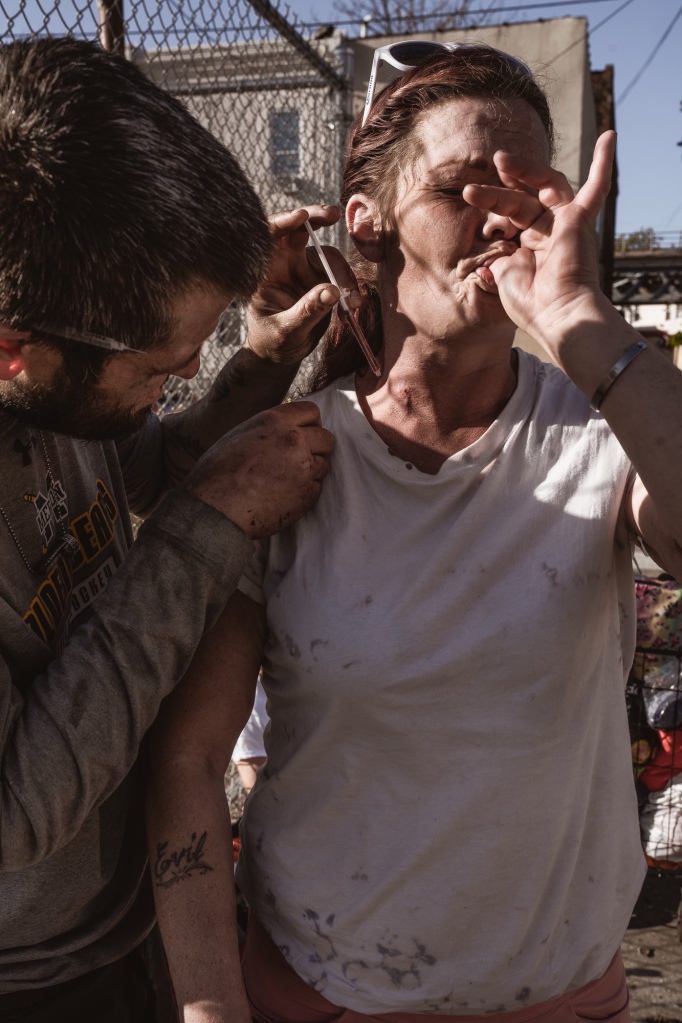
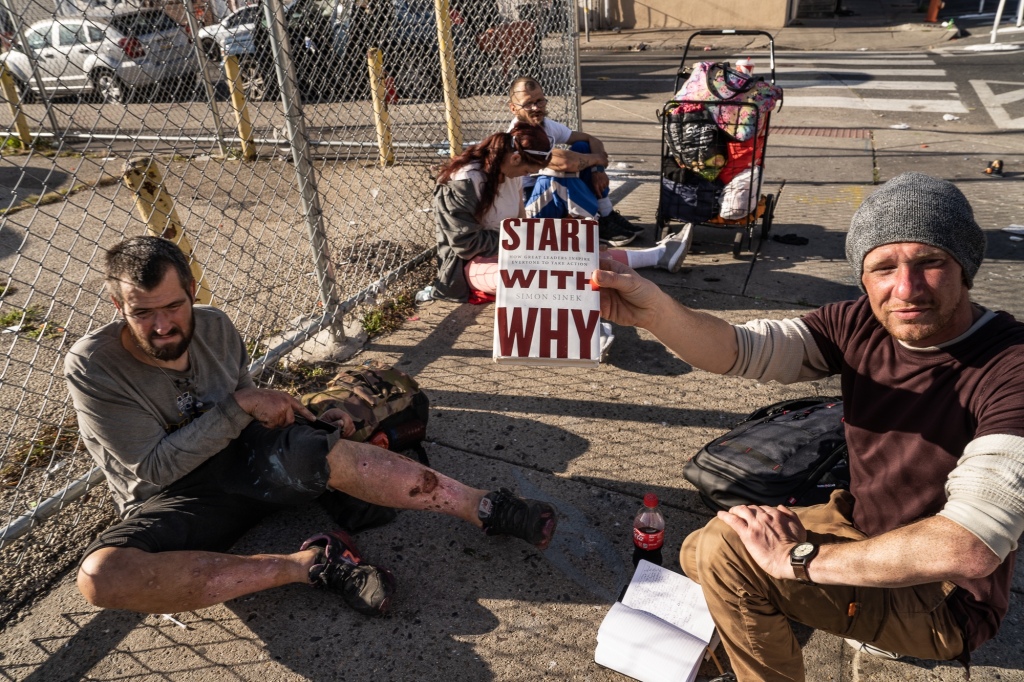
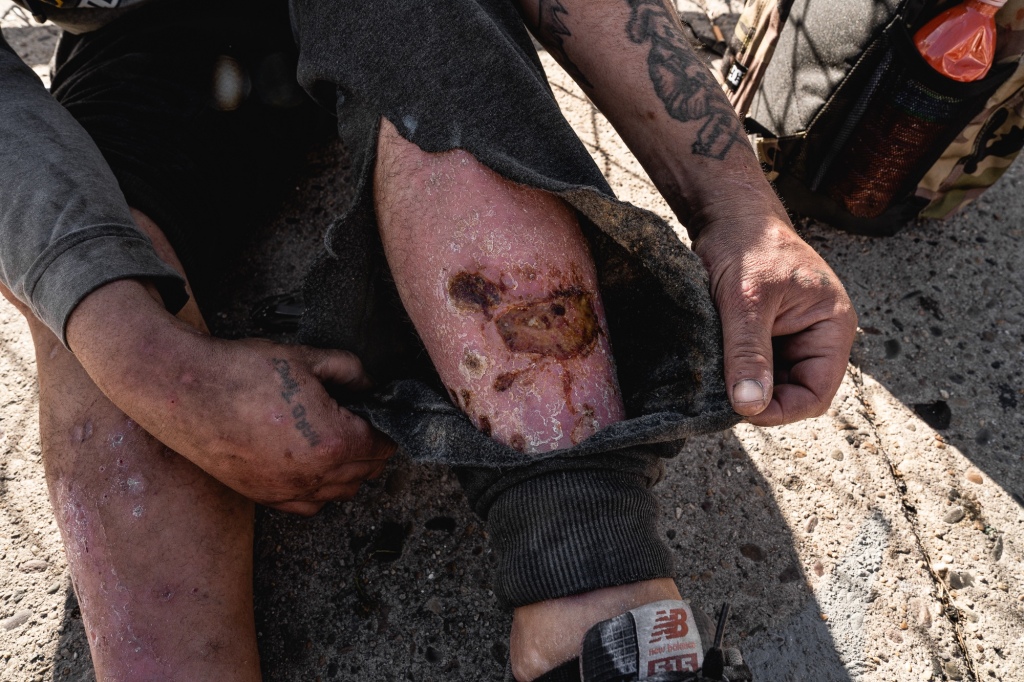
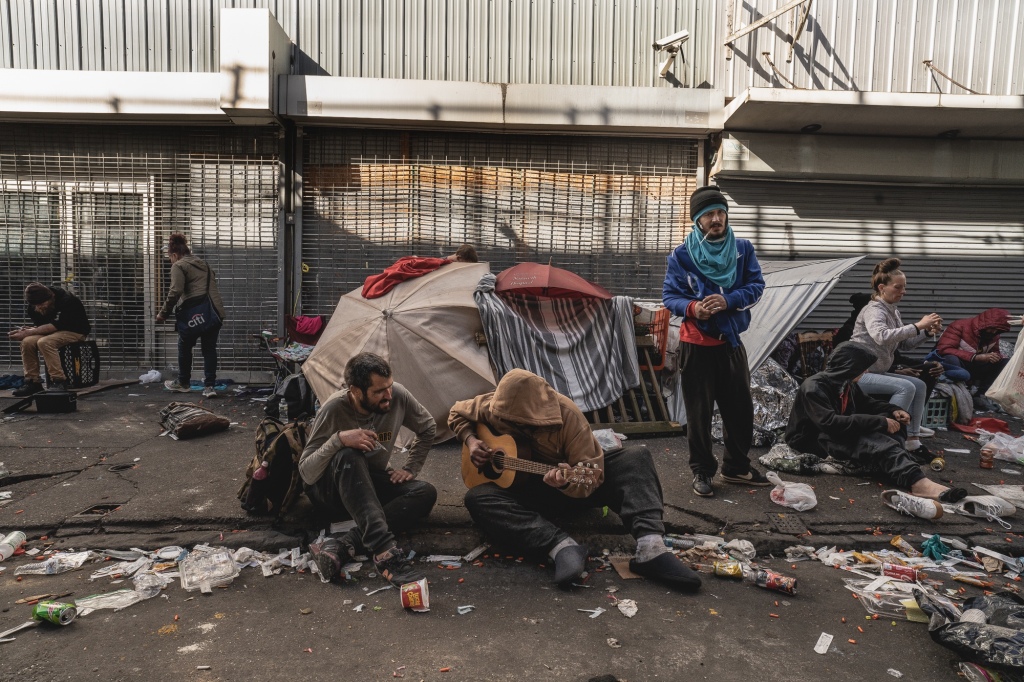
I am grateful to every person that allowed me to photograph. I am also thankful to those in my candid images done on the street, taken without permission. In Kensington permission is often necessary, but in some cases I use street photography techniques which are equally important for me as an artist and photojournalist.
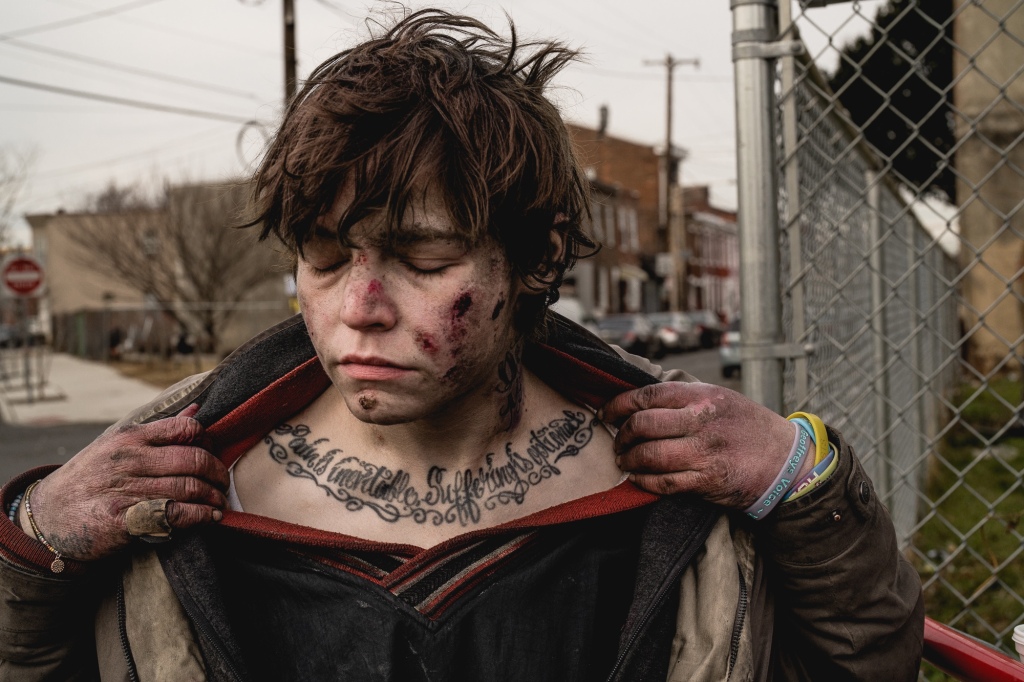
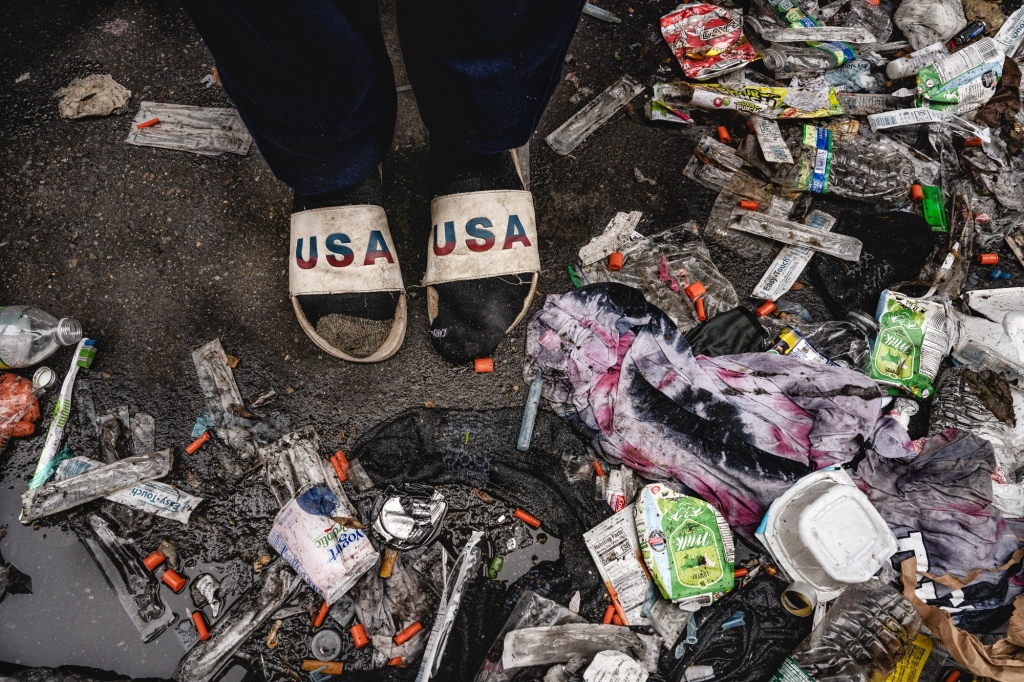
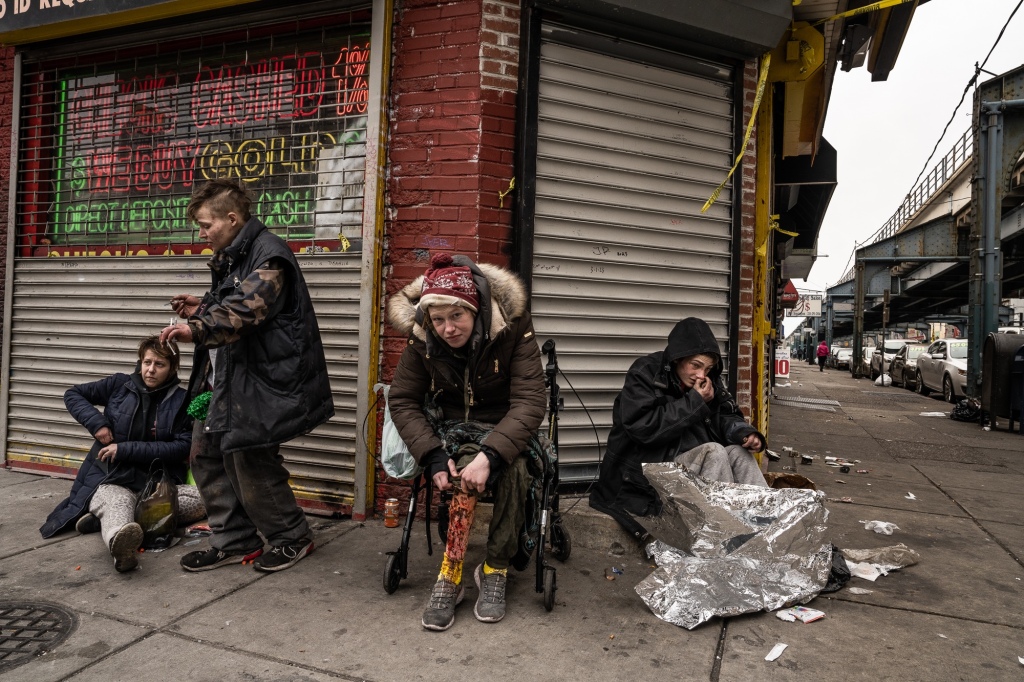
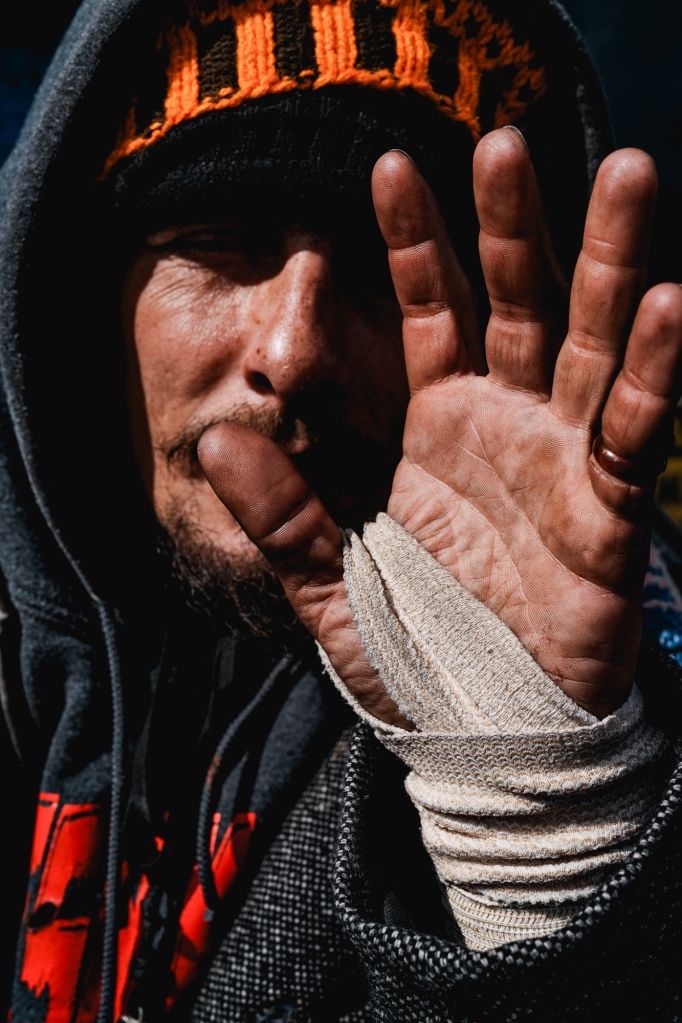
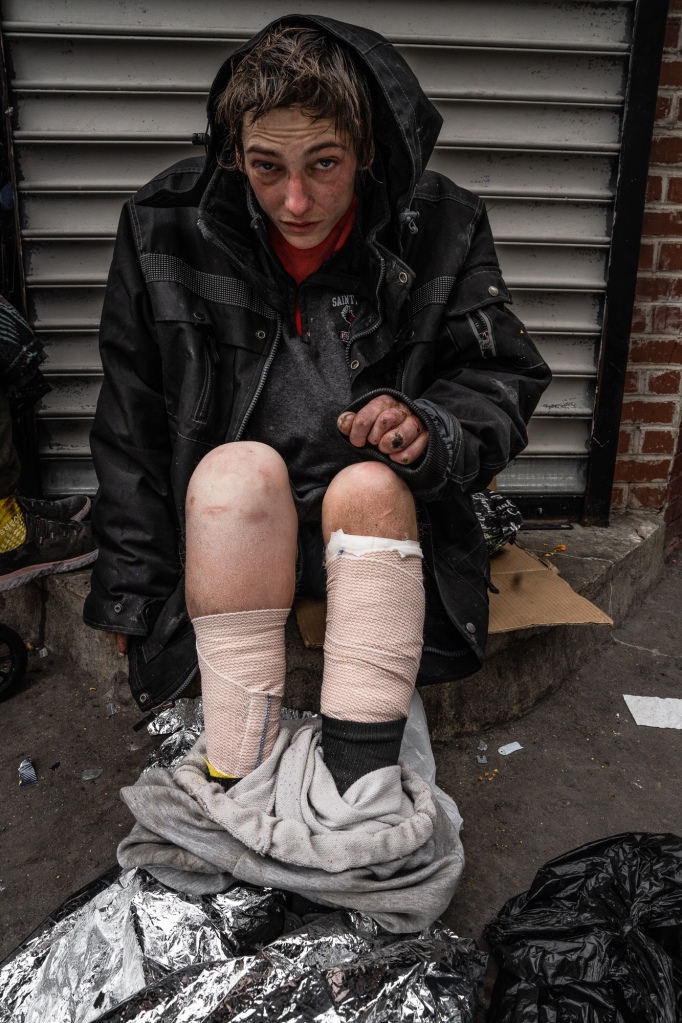
https://www.instagram.com/suzanne_stein?igsh=NmQweDhqODMxM3Fw&utm_source=qr
Jeez Louise!
This is really hard to ingest.
<
div>Not sure how you manage doing this and hope you get some recogniti
LikeLike
Wow. You are truly unbelievable Suzanne. I’m in love with your writing. Of course your images, such a fan, strengthens the base of storytelling. So much compassion and love toward these poor souls in Philly. Thank you for sharing. Tons of love.
LikeLike
Shockingly powerful images. Amazing social skills are required to get so damn close. Dispite the difficult subjects you still maintain control of your camera and create artistically valid photos.
The challenge for the viewer is to not turn away.
LikeLike
I grew up in the Feltonville section of Philly in the 50’s and 60’s and I can’t believe that Kensington has so many people who need help.
LikeLike
I grew up in Feltonville section of Philly during the 50’s and 60’s which was not far from Kensington. I can’t believe that so many people need help and are living in those conditions. When I was a kid, Kensington was a working-class neighborhood but nice neighborhoods.
LikeLike
This just breaks my heart into a million pieces. I have a little over a year clean and I’m so grateful that I got out before this stuff reached us over here in Northern california. I don’t even have words you are truly angels that can go out there and not only see this stuff with your own eyes but put out a helping hand. This is truly Revelations coming true and I hope and pray that more people can open their eyes and see what they need to do to help. Thank you for sharing this and for your heart. God bless you.
LikeLike
Thank you for your time and sharing something about your life. So much appreciate your attention to this story.
LikeLike
I can’t even… I just don’t have the words. This was an extremely poignant & beautifully written piece, and these images will haunt me, probably for the rest of my life. AS THEY SHOULD. These are human beings, and they’ve been completely cast off, left to deal with a staggering amount of insane, unimaginable things on their own with no sympathy from ANYONE, obviously with the exception of those few, rare and beautiful souls such as yourself, willing to take in a HUMAN EXPERIENCE with another person free of judgement, free of personal bias and free of all the disgusting stigma placed upon those struggling with any sort of chemical dependency. It took me longer than it should have to get thru this entire piece because I kept getting choked up, crying at these images.. I wish so badly to be able to somehow help even ONE of these beautiful people you photographed so perfectly. Thank you for the love and respect you showed to all of these strangers, to people who deserve nothing but to be treated exactly the same as any other person without a drug problem would be treated in society. Thank you for inspiring me to want to take action, no matter how small my contribution may end up being, but I know now with certainty I WILL be doing SOMETHING. I have to. It’s my job as a citizen of the same world these people exist in, and I can’t stop thinking about what I would do if the shoe was on the other foot and it were ME in these photographs… or someone I loved or cared for. This HAS TO END. We need to all DO BETTER for our fellow humans, because we’ve all been taught the difference between right and wrong… and “NEVER BE AFRAID TO STAND UP FOR WHAT IS RIGHT & GOOD, EVEN IF IT MEANS STANDING ALONE.” Thank you, a million times, for opening my eyes. You’re incredible. 🤯😭😥
LikeLike
Wow! I can’t thank you enough for taking the time to read my text about tranq, and for your time writing. It means everything to know that my work had an effect on you, and that you found meaning in it. It’s very hard to get most Americans to take a truly hard look at this situation. It takes many eyes on this situation as it appears on the street in reality to bring home the true nature of this catastrophic drug mixture, and the problem in our society generally with drug use. Thank you again for your time and attention. Suzanne
LikeLike
These images and words are incredibly powerful. When growing up I had DARE. Your work is so powerful and can be so impactful to young people growing up with curiosity!! Thank you!!
LikeLiked by 1 person
Thank you for taking the time to write. I appreciate your attention to these difficult images….so important that people understand this serious situation.
LikeLike